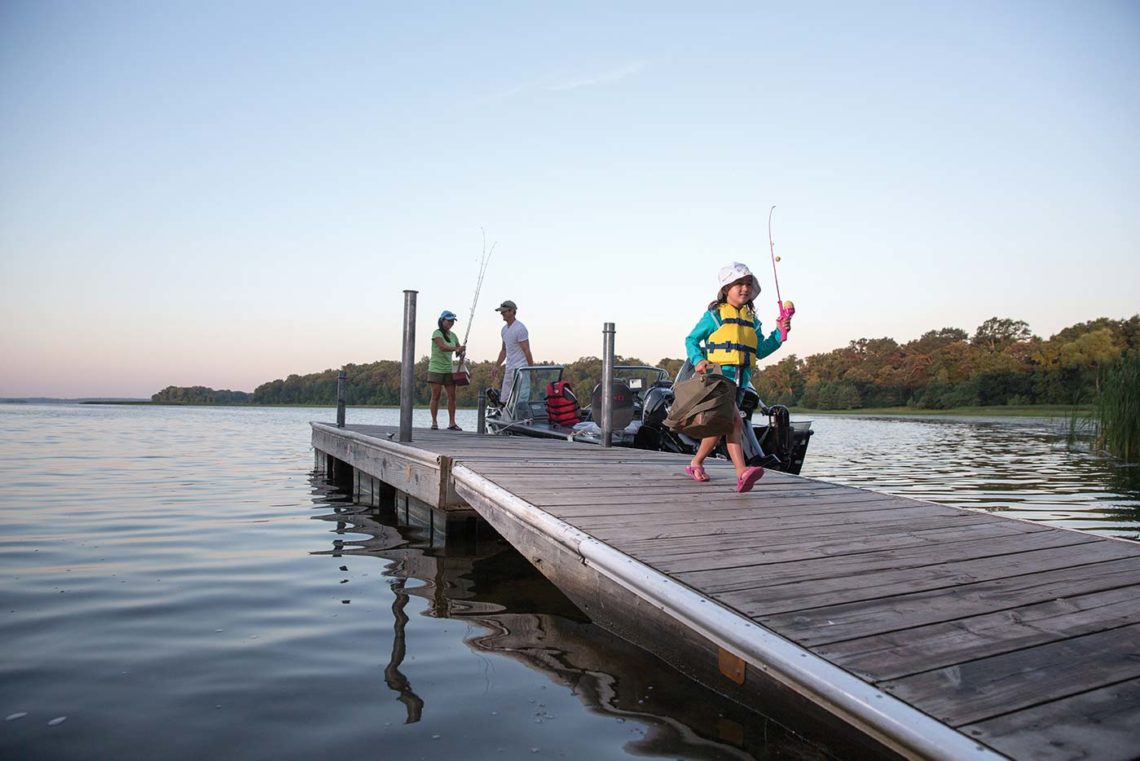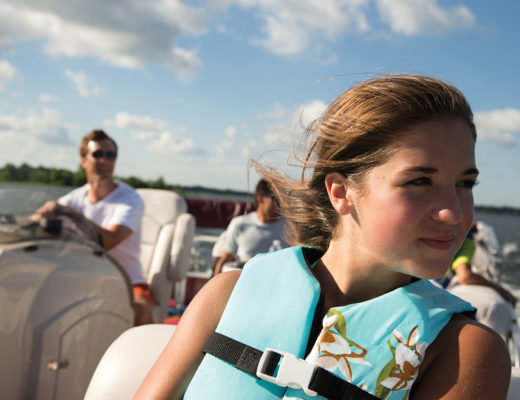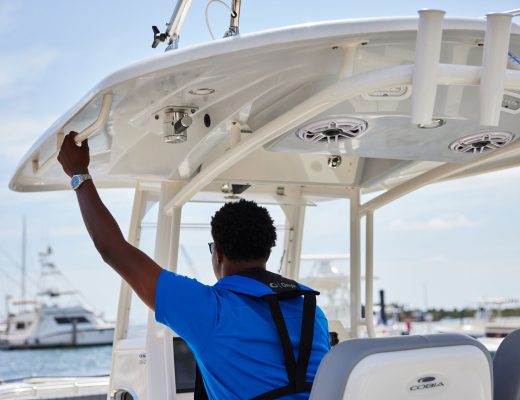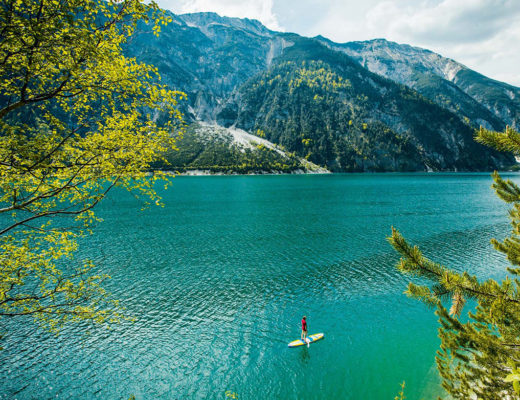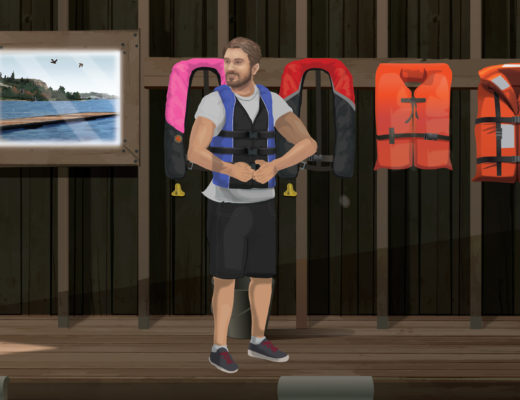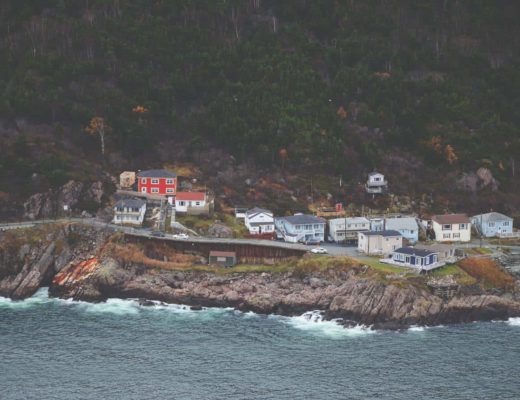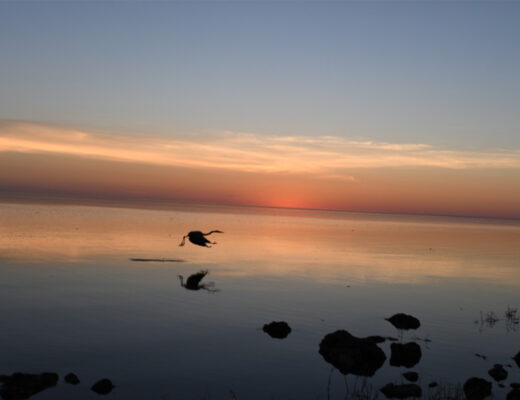Boating is a great way to pass the time, get outdoors, and soak in what America’s lakes and waterways have to offer. However, during a worldwide health pandemic (like we experienced during COVID-19), many boaters can be unsure of the rules, restrictions, and regulations that apply when using boating access areas and getting out on the water in their state.
Across the country, parks and recreation areas, including many of the country’s boating access areas, launches, docks, and marinas, were closed or restricted — but it was still possible to enjoy time on a boat.
While the height of COVID-19 may be over, it can be helpful to understand the restrictions and boating opportunities that were in place across the U.S. — then be thankful boating and fishing rules are back to normal!
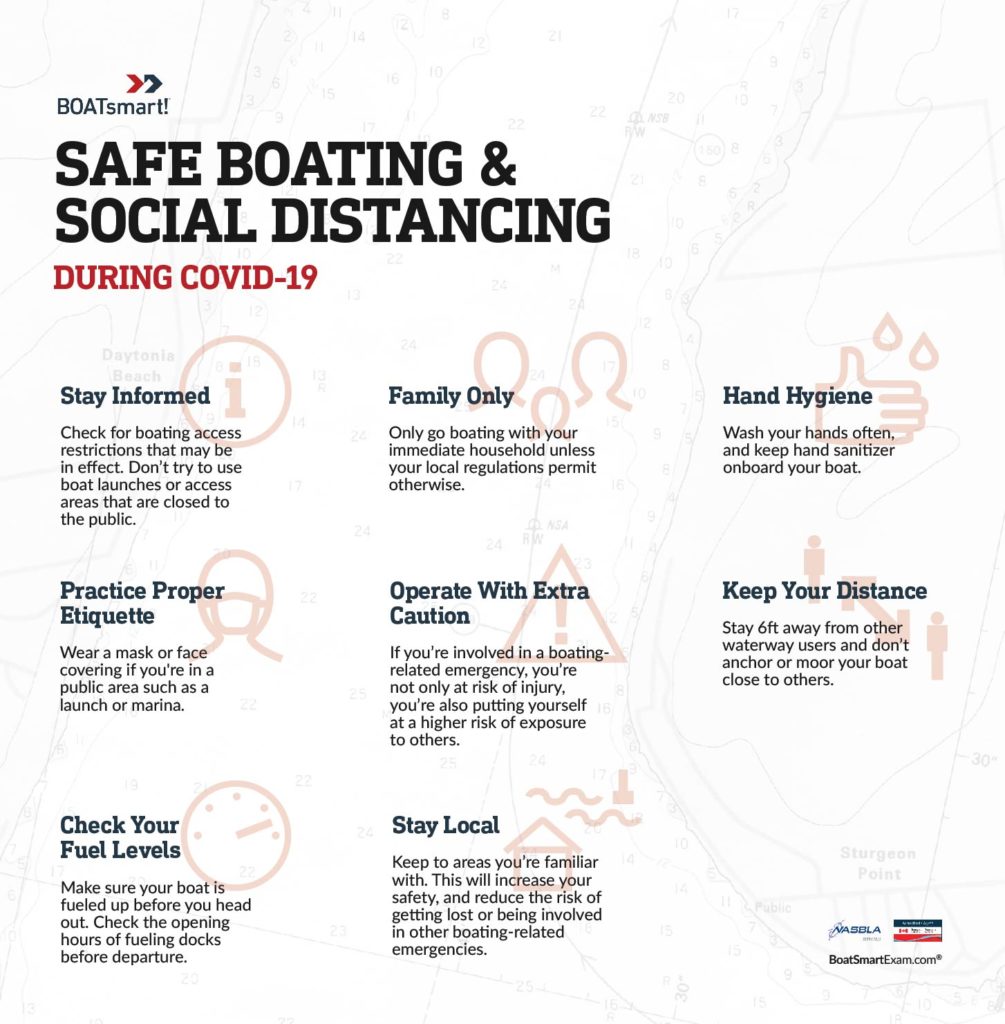
How to Stay Safe and Healthy While Boating During a Pandemic
If you’re planning a boating trip when restrictions could be in place (for example, during a pandemic), be sure to follow health guidelines. During COVID, the following tips helped keep people safe:
- Before you head out, check for boating access restrictions that may be in effect. Don’t try to use boat launches or access areas that are closed to the public.
- Only go boating with your immediate household — those with whom you’ve been in isolation throughout the pandemic unless your state regulations permit otherwise.
- Wash your hands often, keep hand sanitizer onboard your boat to prevent the spread of germs, and don’t touch your face.
- Operate your boat with extra caution. Even though boat traffic may be a bit lighter than usual, that doesn’t mean that accidents can’t happen. If you’re involved in a boating-related emergency, you’re not only at risk of injury from the accident but also at a higher risk of exposure to others, including font-line health workers who may need to be on the scene.
- Keep your distance from other waterway users, and don’t anchor or moor your boat close to others.
- Check your fuel levels! Make sure your boat is fuelled up before you head out, and check the opening hours of fueling docks. Many fueling areas for boaters may be closed, so don’t assume you can gas up at your usual spot.
- Stay local. Now is not the time to explore new areas of your state by boat. Keep to areas you’re familiar with. This will increase your safety and reduce the risk of getting lost or being involved in other boating-related emergencies.
- Get certified. Boater education courses are available online, so be sure you’re properly certified to operate a boat within your state before heading out.
That last one applies even when there isn’t a pandemic!
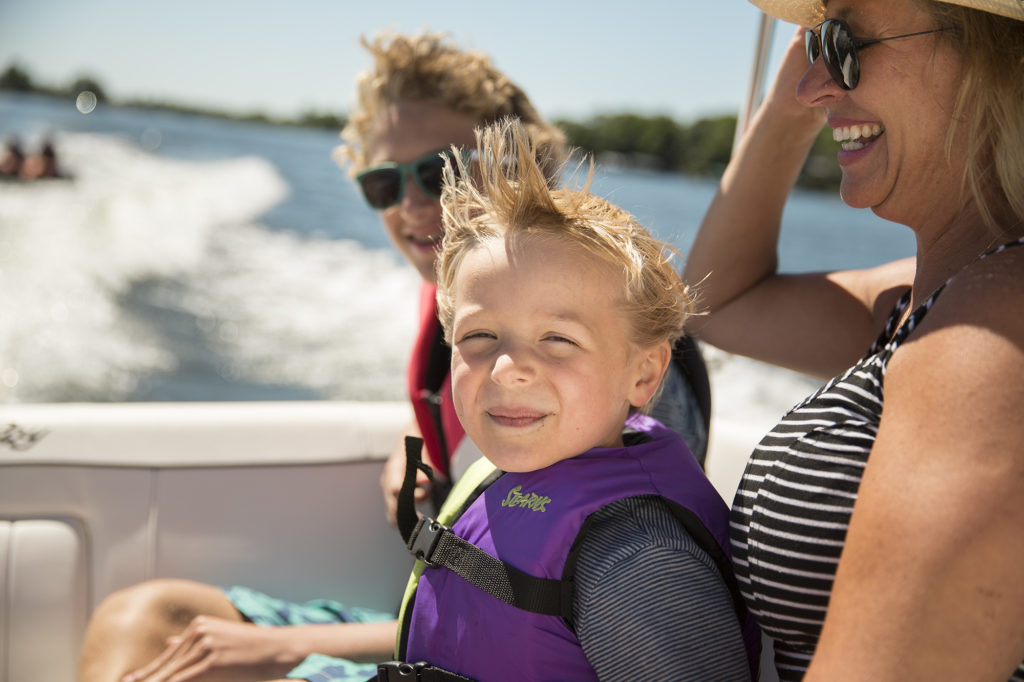
What Were the COVID-19 Rules for the Water and Boating Access?
While many of these rules or restrictions won’t apply when a widespread health crisis isn’t a factor, staying familiar with what was in place for your state in case we ever need these protocols again can be helpful.
Check out this overview of boating access rules — by state — that were in place during the height of COVID-19.
Alabama
Most of Alabama’s state parks, recreation areas, and public boating access areas remained open. Boaters were asked to remember that physical distancing should be practiced in public areas, including boating access areas, docks, and marinas.
Alaska
Alaska saw fewer COVID cases than many states, and the state has since re-opened to pre-pandemic status, meaning all parks, recreation areas, boating access areas, launches, ramps, and marinas are available for use. Fishing charters within the state have also been permitted to resume operations.
However, various protocols were in place at the time to ensure the health and safety of staff and guests.
Arizona
Residents using campgrounds, parks, and public facilities, including boat launches and access areas, were reminded to practice physical distancing and not to gather in large groups. However, as of April 6, 2022, all coronovirus restrictions were lifted throughout the state.
California
During COVID-19, many state parks and recreation areas in California were closed. However, within parks in which physical distancing guidelines were feasible.
Boaters who used launch areas within re-opened parks must practice physical distancing and avoid crowded areas. State residents could use their own private docks or boating access areas to hit the water while avoiding contact with others who were not within their household.

Colorado
Colorado’s Safer at Home order permitted boating access to state parks. Angling and hunting areas also remained open. However, both groups were reminded that they must follow restrictions that may be in place within the area where they’re fishing or hunting.
Boaters also needed to remain within their local area and follow all CDPHE orders to prevent the spread of COVID-19.
Connecticut
Following the end of the pandemic, the Connecticut Department of Energy and Environmental Conservation (DEEP) reopened the department’s 117 boat launches. During COVID-19, boaters were asked to follow guidelines for those who wished to use boat launches managed by the department, including physical distancing guidelines, limitations on gatherings, and restrictions around boat passengers.
Delaware
Marinas in Delaware reopened following the pandemic. Additionally, boat launches and wildlife areas within the state remained open despite the state’s stay-at-home order.
However, during the pandemic, boaters and waterway users were asked to follow restrictions that may have been in place in certain areas.
Florida
Boaters with access to private launches, ramps, and docks were allowed to head out on the water. Additionally, some boat launches remained open during COVID-19.
Boaters, other water users, and beachgoers were reminded to practice social distancing and follow health guidelines. This included not gathering in large groups, maintaining physical distance from others who may be using recreational areas and are not in their immediate household, and following all restrictions put in place within these areas.
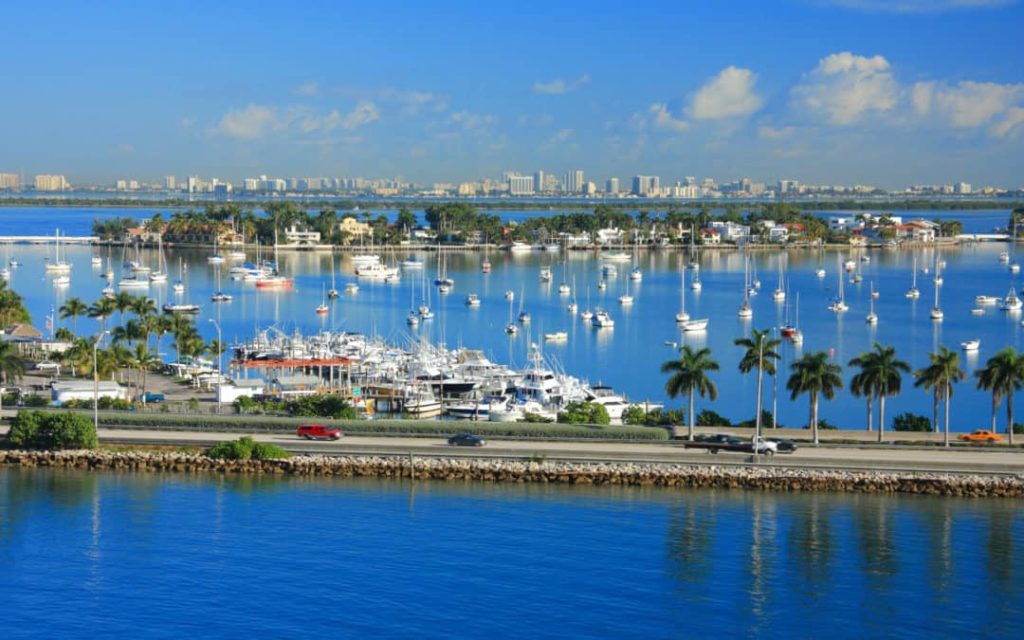
Georgia
While many of the state’s parks and recreation areas remained open, various restrictions remained.
Some parks also limited access and hours of operation to maintain social distancing measures. Additionally, the state encouraged visitors to wear personal protective equipment, such as masks and gloves, and to dispose of the items properly.
Hawaii
As of May 22, 2022, the Hawaii Division of Boating and Ocean Recreation (DOBOR) re-opened its facilities and ended COVID-19 emergency orders.
While restrictions were in place, residents had to follow social distancing guidelines, fewer visitors in certain parks, recreation areas, and facilities, and requirements to wear personal protective equipment (PPE).
Idaho
All boating access areas, parks, and recreation areas within state parks remained open throughout the pandemic.
While this was good news for boaters, anglers, hunters, and outdoor enthusiasts, all visitors to State parks were reminded that restrictions and closures might be implemented at any time if gathering restrictions and social distancing guidelines were not followed.

Illinois
State parks in Illinois initially re-opened during daylight hours only.
While plenty of boating access areas were available within the state, there were still restrictions on the number of passengers permitted on board. Initially, only two passengers were permitted on a single vessel.
Boaters were also reminded that while boating access across many regions was permitted, certain cities could still have restricted access, including Chicago.
Indiana
During COVID-19, Indiana residents were free to enjoy various outdoor activities, including boating, paddling, hiking, fishing, hunting, and more, as long as they followed social distancing guidelines.
State parks, forests, and fish and wildlife areas were also open, and the state suspended entrance fees, meaning that access to these areas was free. However, certain facilities within the parks remain closed, including many campgrounds, playgrounds, and visitor centers.
Iowa
Like many states, Iowa’s state parks, including boating access areas, remained open throughout the pandemic. The state saw a rise in visitors to these areas, including crowds.
Only one boat or household group could use a single boat ramp at a time. Physical distancing guidelines were also required.
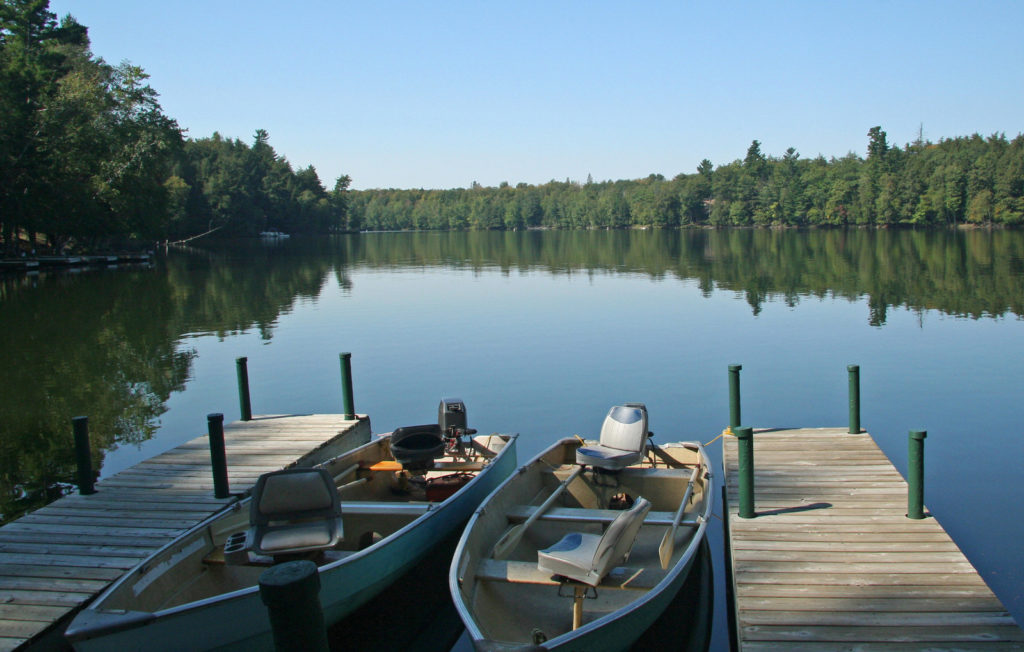
Kansas
All Kansas state parks, fishing lakes, and wildlife areas were open to the public. However, the state asked visitors to follow health guidelines and social distancing recommendations.
Boat owners were also reminded that vessel registration requirements were still being enforced.
Kentucky
The Kentucky Department of Fish and Wildlife (KDFW) kept its boat launches and access points open to the public throughout the pandemic. However, the department stressed that this was only possible if the public maintained physical distancing guidelines.
However, not all boat launches and access points are managed by the KDFW. So, operators were asked to check beforehand to determine if specific restrictions were in place (e.g., Day access only) or if the launch was operational.
Louisiana
State-managed parks and boating access points were open within the state. Restrictions within these areas included social distancing requirements and limiting gatherings to groups of ten.
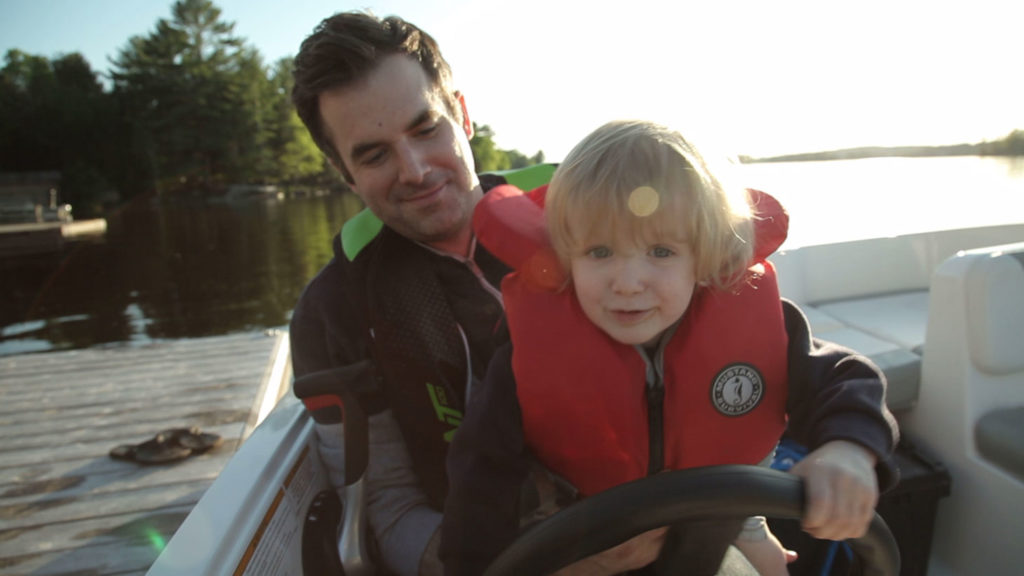
Maine
The Maine Department of Inland Fisheries kept state parks open to the public within the state. Fishing was also permitted, and boating access points were open and available.
Guests within parks were reminded to maintain their distance from others, including when parking in lots.
Maryland
When boating and fishing access points were re-opened, state parks could still have restrictions and regulations in place to protect the safety of staff and visitors. Boaters who launched within the parks could only boat with their immediate household and had to maintain their distance from other vessels on the water.
After reopening marinas and boat pump-out stations, all boaters were reminded that regular boating rules and regulations still applied.
Massachusetts
The Massachusetts Office of Fishing and Boating Access provides access to and maintains over 290 coastal and inland boat and canoe launch and fishing areas across the state. These access points, launches, and fishing areas remained open to the public.
However, the state implemented guidelines for boating and various other marine activities to reduce the spread of COVID-19. These guidelines included face-covering requirements, limits on group size, and how to stay safe when using public boat ramps and launches.
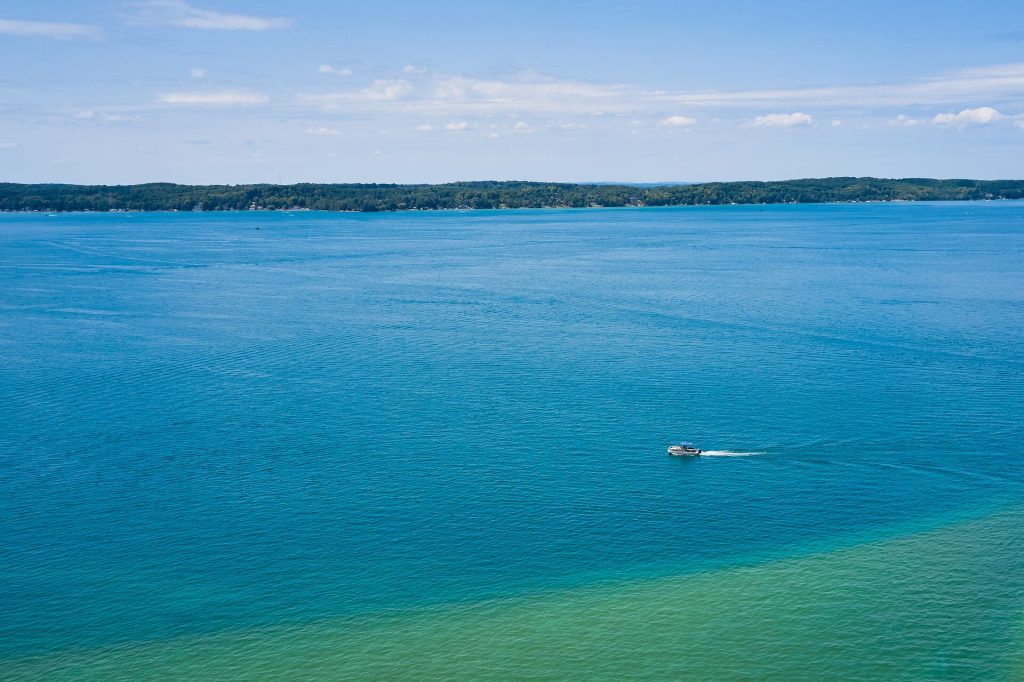
Michigan
Motorized boat operations were initially prohibited early in the pandemic. However, the order was revised, and motorized boats were permitted to operate.
Boating access sites managed by the Michigan Department of Natural Resources (DNR) were reopened. The sites remained open as long as visitors followed social distancing protocols. State harbors and marinas also re-opened for public use as the pandemic passed.
Minnesota
Minnesota’s state parks, recreation areas, and boating access points remained open. While the Stay Safe MN order did not restrict boating, boaters were reminded to follow social distancing practices when using public launch areas and while on the water. Boaters were also encouraged to boat only with members of their household.
Mississippi
Most boating access sites within Mississippi remained open, although some had specific restrictions, including reduced hours of operation. While state parks, recreation areas, and boat launch sites were closed briefly, they also reopened for day use after the height of the pandemic.
Missouri
All Missouri Department of Conservation-managed conservation areas, trails, and boating access points remained open for normal use.
The State reminded park visitors to follow health and safety guidelines, including social distancing and gathering in groups of only ten people or less. Additionally, visitors were encouraged to avoid overcrowding popular areas and congregating in public spaces.
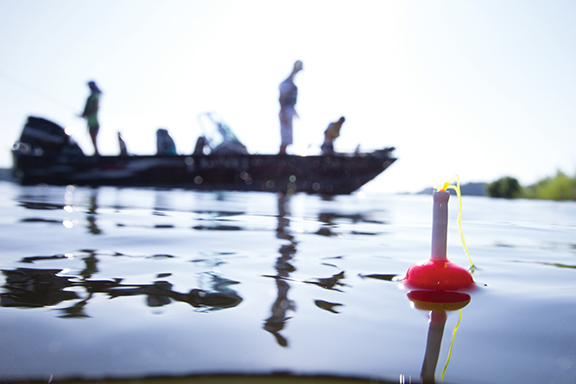
Montana
Most State Parks in Montana, including boating and fishing access points, stayed open for use. All park visitors were reminded that social distancing measures must be followed.
Camping was also permitted within almost all state parks, except for Camp Baker within Smith River State Park.
Nebraska
Nebraska Game and Parks managed beaches and swimming areas, which reopened after the pandemic.
All boating activities, including skiing and tubing, were permitted. However, the agency recommended that visitors and those using public spaces, including waterways, continue to practice social distancing. Social distancing should also be practiced on boat launch ramps.
Guests who moored boats near sandbanks to socialize were asked to avoid other boats and maintain distance from others using the area.
Nevada
Nevada’s state-managed parks opened for day use only. Outdoor recreation within the state was not highly restricted; however, restrictions were in place within specific areas.
All visitors to parks who use facilities, including boating access areas, were required to practice social distancing.
The Lake Mead National Recreation Area applied a phased re-opening process to grant access to the area.

New Hampshire
Most boating access points within the state, including those within state parks, reopened for use following the pandemic. However, some ramps and launches within the parks still had restrictions in place, including facility closures such as restrooms.
Additionally, docks within state parks were installed after social distancing restrictions were lifted.
New Jersey
State and county parks within the state reopened after the height of the pandemic, including boating access areas and fishing areas. Visitors to these areas were reminded that they must practice social distancing.
Additionally, chartered boats and boat rental businesses could reopen with strict guidelines. Marinas and boatyards reopened, some with restrictions still in place.
New Mexico
While all state parks within New Mexico were closed, restrictions were eventually lifted. Parks are now open for day use.
New York
An Executive Order issued by Governor Andrew Cuomo allowed marinas and boat launch ramps to re-open within the State following the worst of the pandemic. However, some sites could have strict restrictions in place. Boaters were encouraged to call in advance to learn about restrictions.
State Parks reopened, initially with density limits to ensure social distancing. Visitors were also required to wear face coverings when using the parks.
North Carolina
North Carolina’s Stay at Home order did not restrict boating, fishing, or hunting. However, the state recommended that residents leaving their property to use outdoor recreation facilities verify that the location and facilities are open to the public.
Additionally, certain counties had restricted boating activities and launch sites within the state.
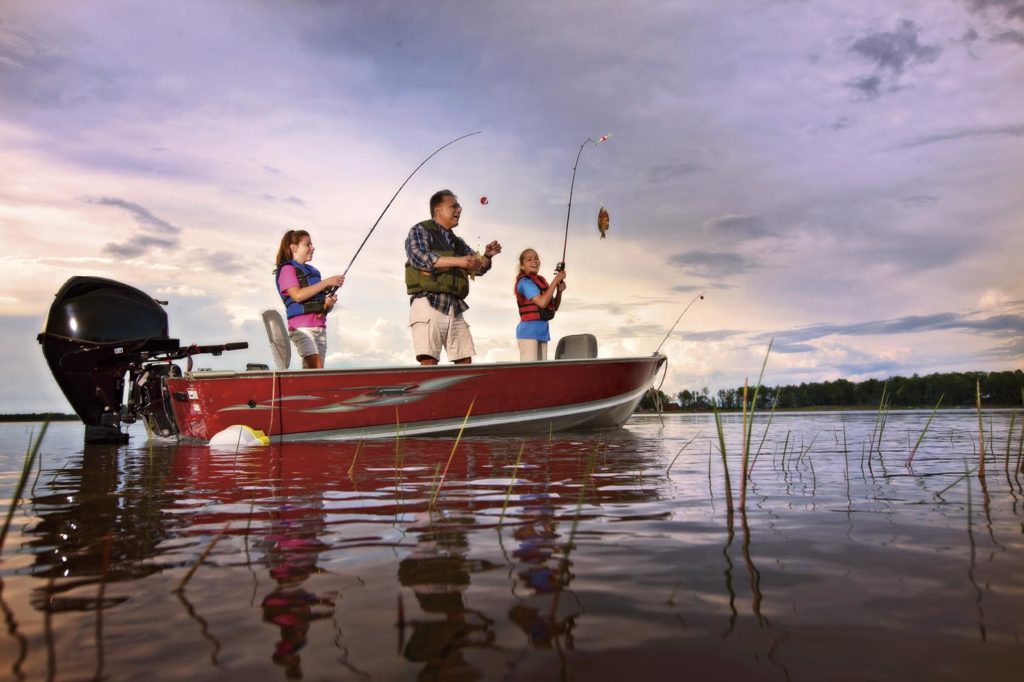
North Dakota
North Dakota implemented various shutdowns and restrictions within State Parks. However, day-use facilities remained open, including boat ramps, trails, and recreational areas.
An ease in restrictions granted access to more park facilities, including playgrounds, campgrounds, picnic areas, and visitor centers.
Residents were reminded to check for regulations before planning their trip. While State Parks reopened, restrictions were still in place in various counties.
Ohio
Ohio’s public boat ramps stayed open, and State Parks were open for a variety of recreational activities, including boating, fishing, hiking, and swimming.
Portions of the Hocking Hill State Park remained closed for a time, including campgrounds, cabins, Ash Cave, Cedar Falls, Old Man’s Cave, and Whispering Cave. Conkle’s Hollow State Nature Preserve and some parts of Hocking State Forest also remained closed.
Oklahoma
Boating access points within Oklahoma remained open to the public. However, visitors to parks from the NY tri-state area, Washington state, Louisiana, and California were required to self-quarantine.
Oregon
As the pandemic ended, Oregon State Parks began to permit limited day use of some parks, including boating access. Additionally, limited overnight camping was also allowed.
The state strongly encouraged social distancing at all times. However, some parks, including campgrounds, restrooms, and beach access points, still had restrictions in place, so visitors were asked to check restrictions in advance to ensure that facilities were open.
Pennsylvania
Pennsylvania did not restrict boating or fishing activities. Many boating access points and fishing areas, including those within State Parks, stayed open.
However, residents within the state were strongly encouraged to wear face coverings and practice social distancing within public areas, including parks.
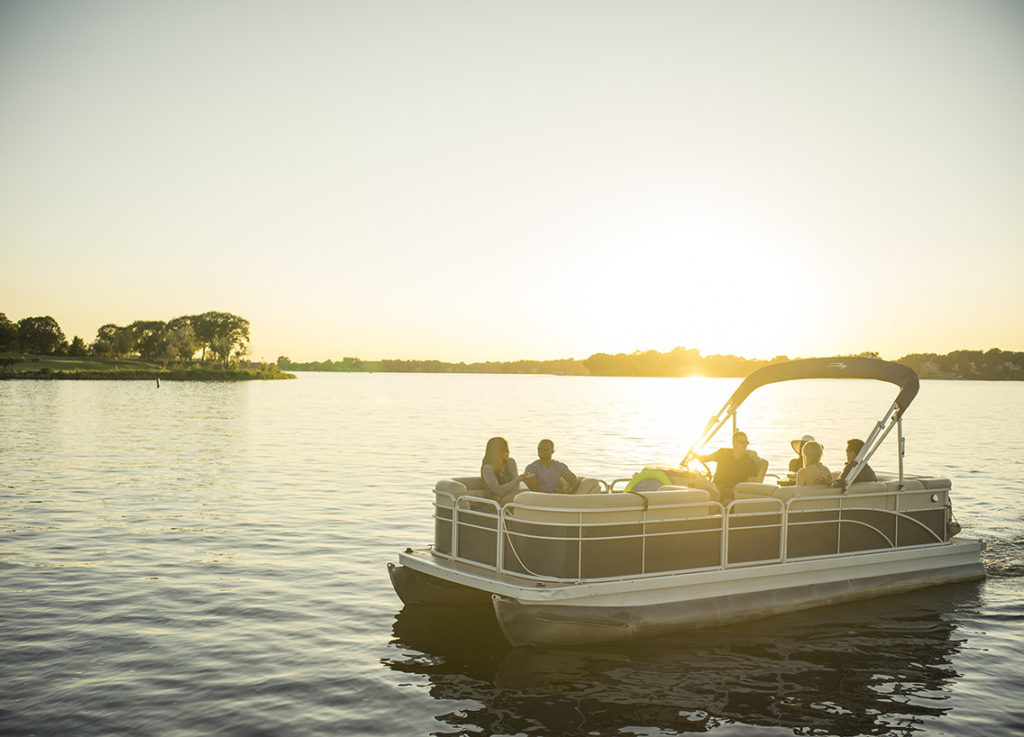
Rhode Island
Boating was permitted within Rhode Island. However, the state provided boaters with guidelines to ensure the health and safety of participants.
Launch ramps and access points within state parks were also open. Visitors to parks were encouraged to wear face coverings at all times in public spaces.
South Carolina
Restrictions for boating within South Carolina were lifted toward the end of the pandemic, including closures of public boating access points. State Parks also reopened around the same time, meaning there were plenty of opportunities to hit the water and enjoy summer.
Although parks and boating access points were open, South Carolina State Parks reminded visitors that guidelines and restrictions were in place.
Tennessee
Tennessee’s boating access areas and marinas within state parks were open for use. However, visitors planning to use public boat launches of facilities within state parks were encouraged to check restrictions in advance to ensure that the facility they plan on using is open and not under restrictions.
Texas
State Parks in Texas were open for day and overnight use, including boating access points. However, some areas were still restricted.
Visitors to state parks were encouraged to check restrictions and guidelines in advance of visiting. Face coverings were also required in all public spaces.
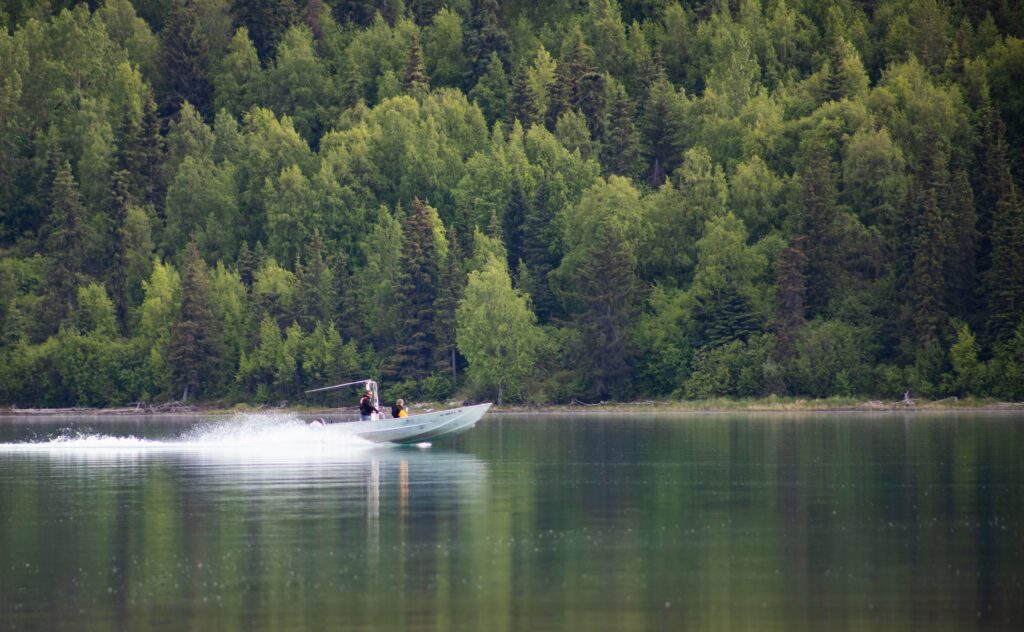
Utah
State Parks in Utah, including boating access points, were open for use. However, some restrictions remained. Visitor centers within the parks were closed, and overnight camping was prohibited.
The state encouraged anyone using public recreation spaces to follow health and safety guidelines, including social distancing.
Vermont
All public boating and fishing access points within Virginia State Parks were open 24/7. Visitors were reminded to practice social distancing and recreate only with those they’ve been in isolation with.
Washington
Washington State-managed boat launch ramps and access points reopened for day use as the pandemic ended. Additionally, State Parks reopened for camping and day use.
While not all parks were open immediately, visitors were encouraged to check restrictions, closures, and guidelines in advance.
West Virginia
Many public boating access points within West Virginia stayed open, including those within state parks. Fishing areas were also open, and campgrounds within State Parks reopened at the end of the pandemic. However, campers were only permitted to stay for seven days.
Campground facilities, including restrooms and restaurants, also reopened around the same time. Additional cleaning protocols were implemented in these spaces to ensure safety, including restaurant capacity restrictions.
Visitors were reminded that social distancing must always be practiced when visiting parks, including in boat launch areas.
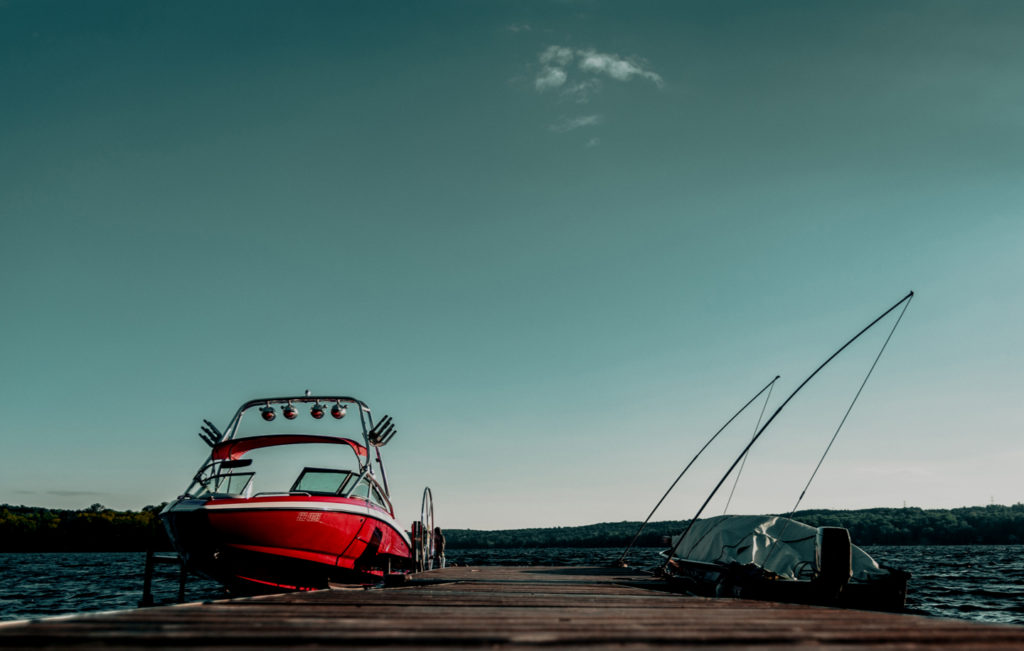
Wisconsin
All boat launches managed by the Wisconsin DNR were open for use. Boaters and anglers were reminded to practice social distancing at all times.
Boat owners were also reminded that boat registration was still required and could be completed online or via email.
Wyoming
Most boating access points managed by the Wyoming DNR stayed open for use, including DNR-managed boat launches and access points. State parks and outdoor recreation spaces within the state saw an increase is visitors.
Anyone using an outdoor recreation area, including parks, park facilities, and boating access areas, was asked to practice social distancing.
“Always On” Friendly Boating Safety Reminders
Whether we’re in a pandemic or not, boating safety must be “always on.” So here’s your quick BOATsmart! Safety Checklist to always keep in mind when on the water:
- Wear your life jacket! More than 80% of Americans who drowned while boating were not wearing a life jacket. So, always wear a properly fitted life jacket.
- Water on the water and beer on the pier. Stay safe and sober when spending time on the water this summer. Boating while intoxicated by drugs and alcohol is illegal in the United States and dangerous.
- Be prepared. Load your boat with the required safety equipment for your trip, file a trip plan before you head out, and exercise safety while on the water.
- Get certified. If you are operating a motorized boat, remember to get certified with your Boater Education Card. You can get certified with BOATsmart! in three easy steps.
- Be aware of cold water risks. Even though summer is just around the corner, the water in most regions is still dangerously cold throughout the spring. Cold water can be deadly, so wear your life jacket and be aware of the impacts of cold water immersion.

Fishing and COVID-19
We’ve covered some state specifics that took place during COVID-19, but how did pandemic rules impact fishing?
The key to fishing safely during the pandemic was implementing social distancing with your fishing buddies, but there were a few other considerations, including:
- Fishing locally instead of going out on far-away trips.
- Keeping general first-aid products and safety gear on the boat with you to avoid calling first responders if possible.
- Adhering to local and provincial guidelines around outdoor activities.
- Your regular outdoor gear suppliers might have been hurting during this time, so anglers were asked to consider picking up anything needed for a fishing trip from a local retailer. Many of them offered curbside pickup!
- If you were feeling even slightly under the weather, you were asked to stay home.
Additionally, if your fishing buddies were not the close family and friends you regularly saw, consider going out on separate boats or wearing masks and staying the recommended six feet apart.
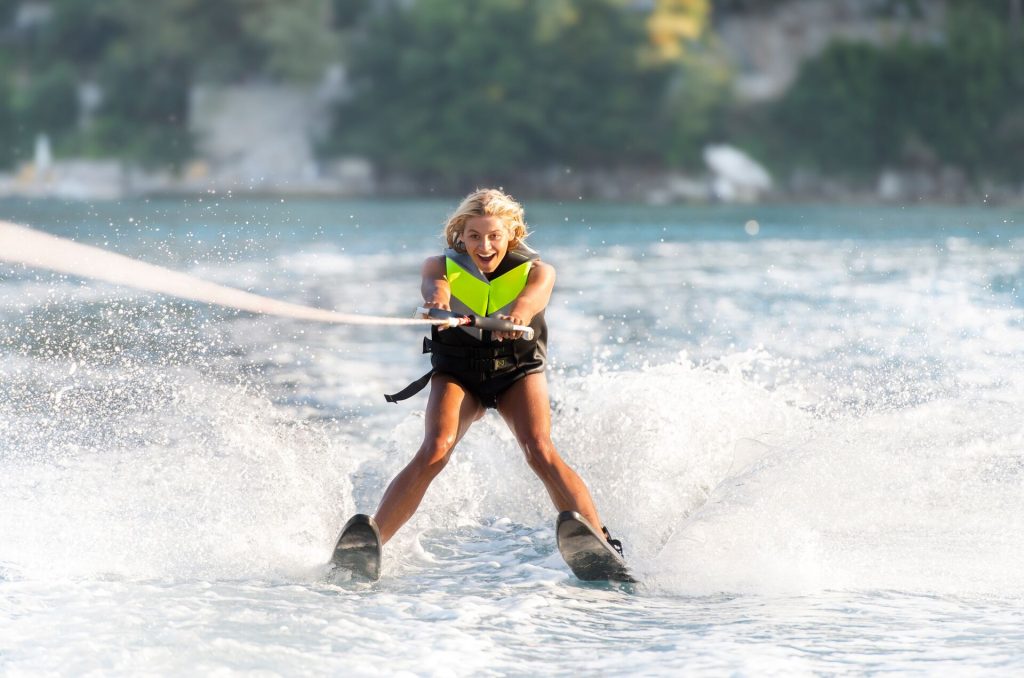
Watersports and COVID-19
Additionally, there were different things to consider when enjoying some of your favorite watersports. These included:
- Tubing: Keep tubing to a single rider instead of allowing multi-rider tubes and sanitize the tubes between uses.
- Waterskiing: Limit yourself to one person per water ski and sanitize the ski before someone new hops on.
- Wakeboarding or knee boarding: Minimize close contact by pulling one water ski at a time and ensuring there is a spotter. Then, sanitize boards between uses.
- Water trampoline: Only allow people from the same household to jump at once and sanitize the trampoline between uses.
- Wake surfing: Remember to have a spotter, but keep surfing to one person at a time. Then, sanitize the surfboard before someone new uses it.
Staying safe (as always) involves common sense on the water, life jackets, and responsible speeds.
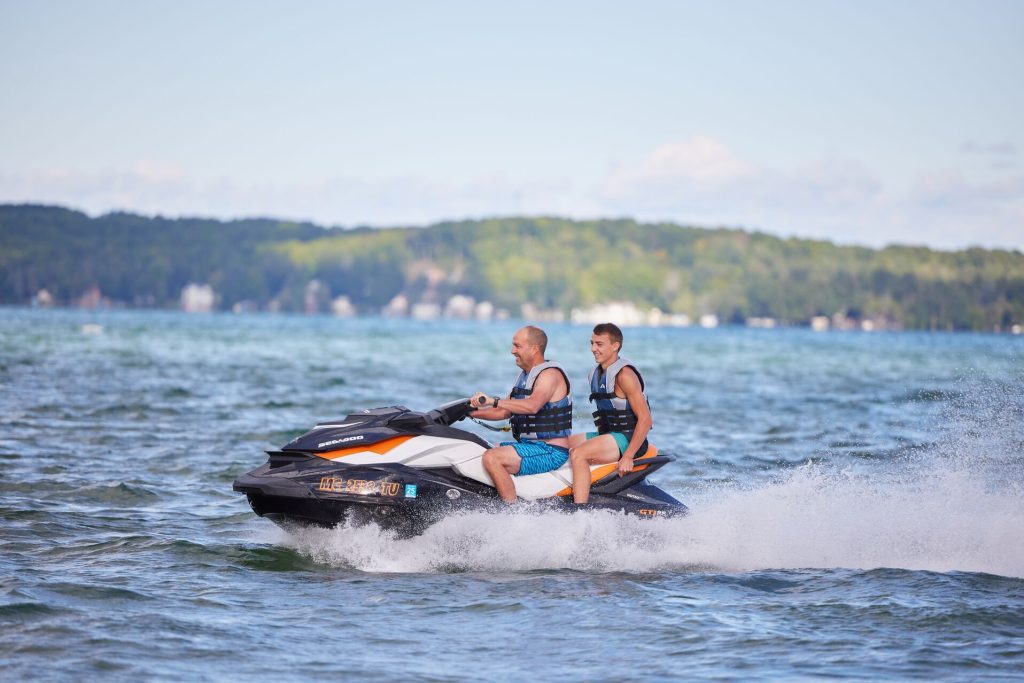
Always Make Water Safety a Priority
We’re thankful to no longer be in a pandemic! While the COVID-19 restrictions and boating access rules no longer apply, safety while on the water must always apply.
To learn more about current safety standards for your state, take a boating education course! BOATsmart! offers fun and engaging online courses to help boaters and water enthusiasts stay safe and protect others while enjoying the water.
Choose the course for your state, start learning, pass the exam, and get your boater education card. Then, have fun!
Originally published June 19, 2020. Content most recently reviewed and updated for recency and accuracy October 25, 2024.
